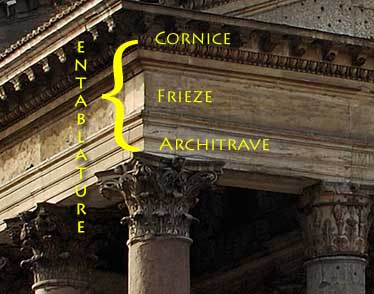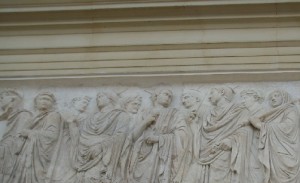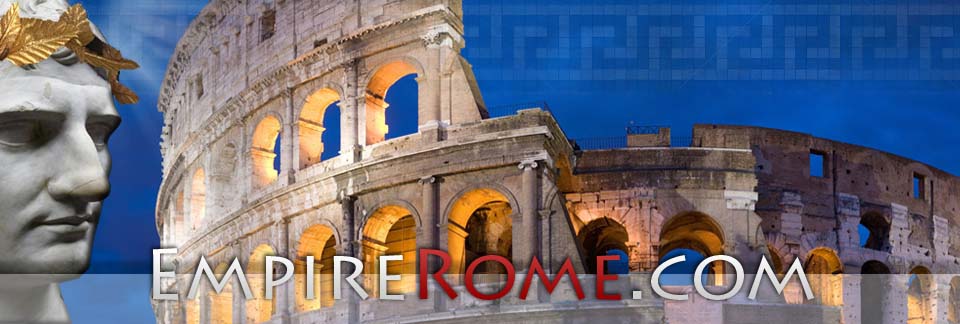
The Frieze was part of the entablature in Ancient Roman and Greek buildings. It was located between the cornice and architrave. See the picture above for location on the entablature to locate the frieze. If one looks at various Ancient Roman and Greek temples and monuments, one will find friezes vary in size and style. The Ancient Romans barrowed much of their architectural design from the Greeks. This is why much of their architectural achievements and designs were very similar yet notably different.
The frieze is the wide central section part decorated with low relief projecting images known as a bas-relief or low relief. Many of the friezes were plain in the Ionic or Doric order that the ancient Greeks and Romans built. Even though at times they were simple yet elegant, many friezes were decorated with bas-reliefs that depicted people, gods, and plants for beatification purposes. It should be noted some of the friezes had simple writing in them. Friezes were used in both Ancient Greek and Roman buildings because artists could adorn the temple with images, artwork or writing which was attributed to the structure they were on. Many of these designs were influenced by the order of that time era as column capitals also bore the orders designs depending on when they were built.
 A famous Ancient Roman frieze can be found on the Ara Pacis Augustae also known as the Alter of Augustan Peace. The remarkable frieze depicts figurines in Ancient Roman mythology and imperial members. This frieze is grand compared to friezes found on other monuments in and around Ancient Rome. An example of this is the Pantheon which has Ancient Roman writing on the frieze.
A famous Ancient Roman frieze can be found on the Ara Pacis Augustae also known as the Alter of Augustan Peace. The remarkable frieze depicts figurines in Ancient Roman mythology and imperial members. This frieze is grand compared to friezes found on other monuments in and around Ancient Rome. An example of this is the Pantheon which has Ancient Roman writing on the frieze.

